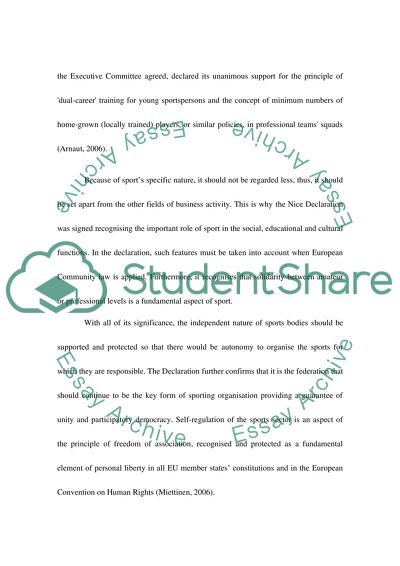Cite this document
(Sport as Culture in EC Law Essay Example | Topics and Well Written Essays - 1750 words, n.d.)
Sport as Culture in EC Law Essay Example | Topics and Well Written Essays - 1750 words. Retrieved from https://studentshare.org/sports-and-recreation/1566325-advanced-sport-management-2-soccer
Sport as Culture in EC Law Essay Example | Topics and Well Written Essays - 1750 words. Retrieved from https://studentshare.org/sports-and-recreation/1566325-advanced-sport-management-2-soccer
(Sport As Culture in EC Law Essay Example | Topics and Well Written Essays - 1750 Words)
Sport As Culture in EC Law Essay Example | Topics and Well Written Essays - 1750 Words. https://studentshare.org/sports-and-recreation/1566325-advanced-sport-management-2-soccer.
Sport As Culture in EC Law Essay Example | Topics and Well Written Essays - 1750 Words. https://studentshare.org/sports-and-recreation/1566325-advanced-sport-management-2-soccer.
“Sport As Culture in EC Law Essay Example | Topics and Well Written Essays - 1750 Words”. https://studentshare.org/sports-and-recreation/1566325-advanced-sport-management-2-soccer.


